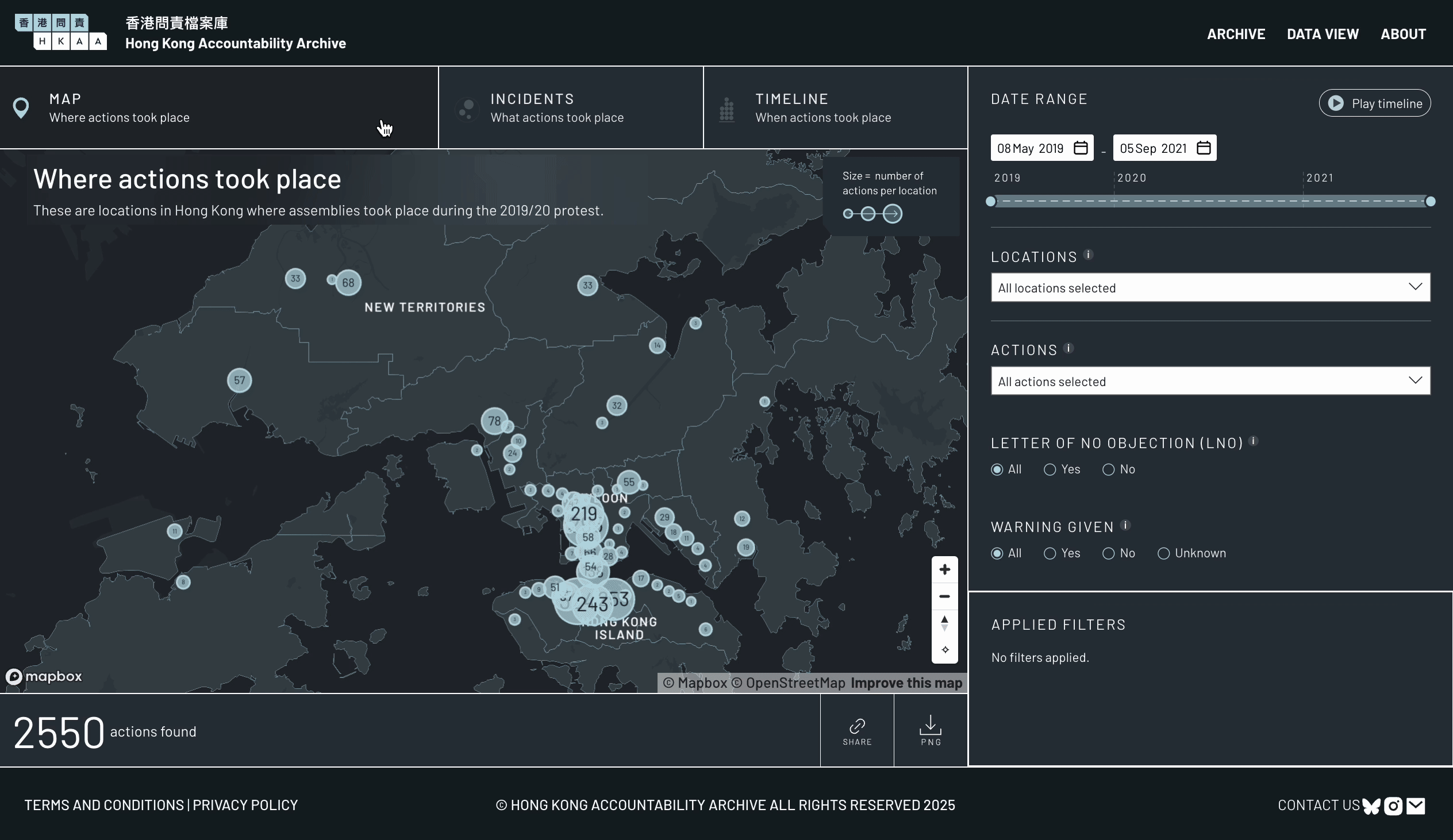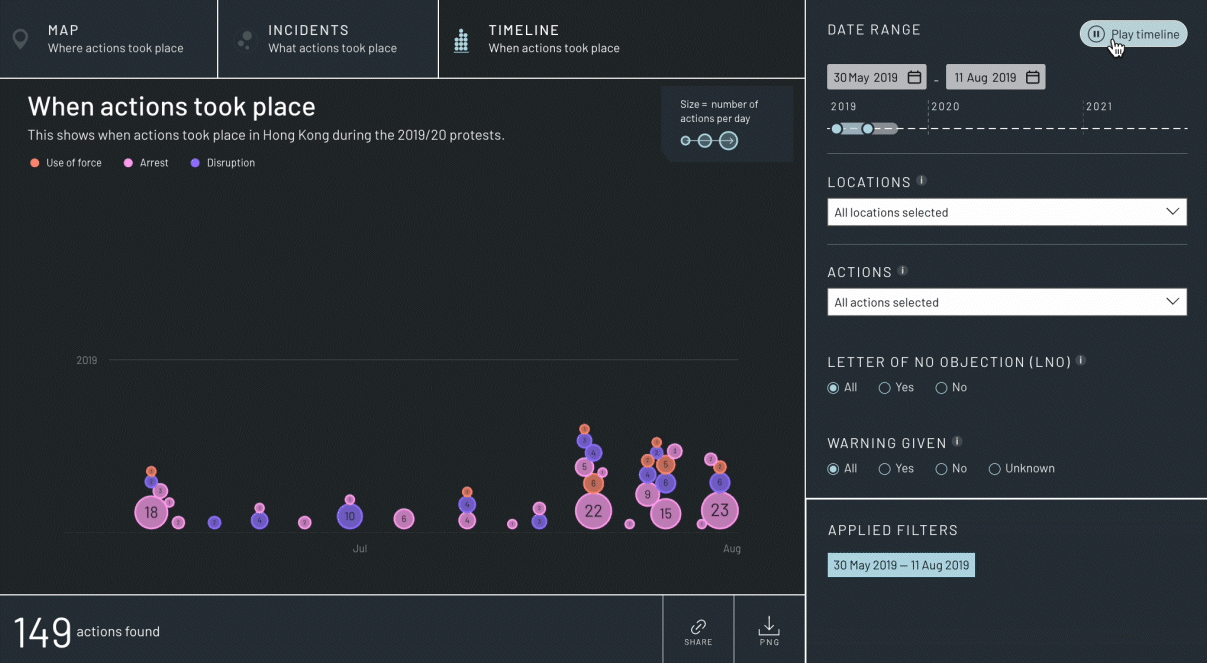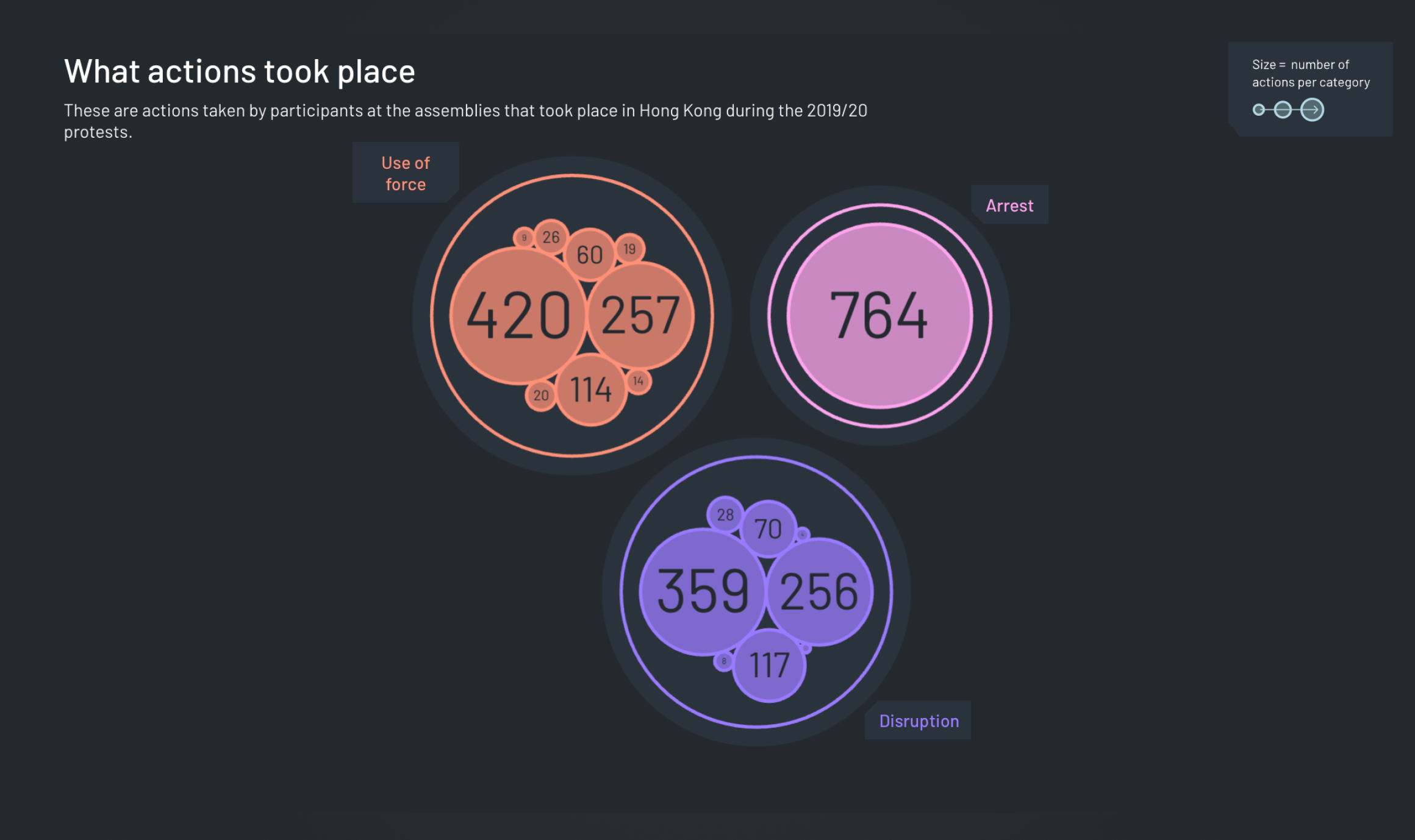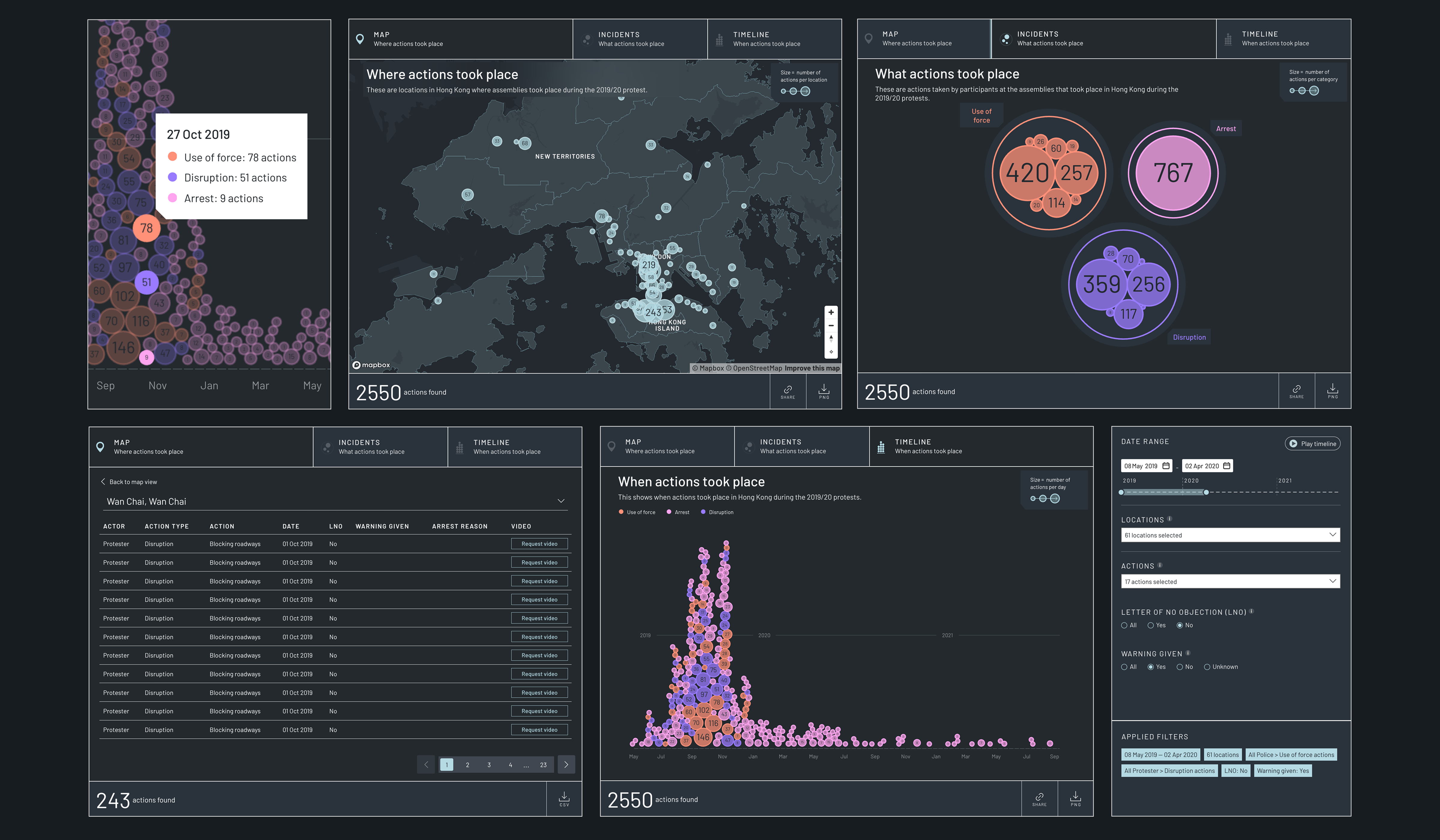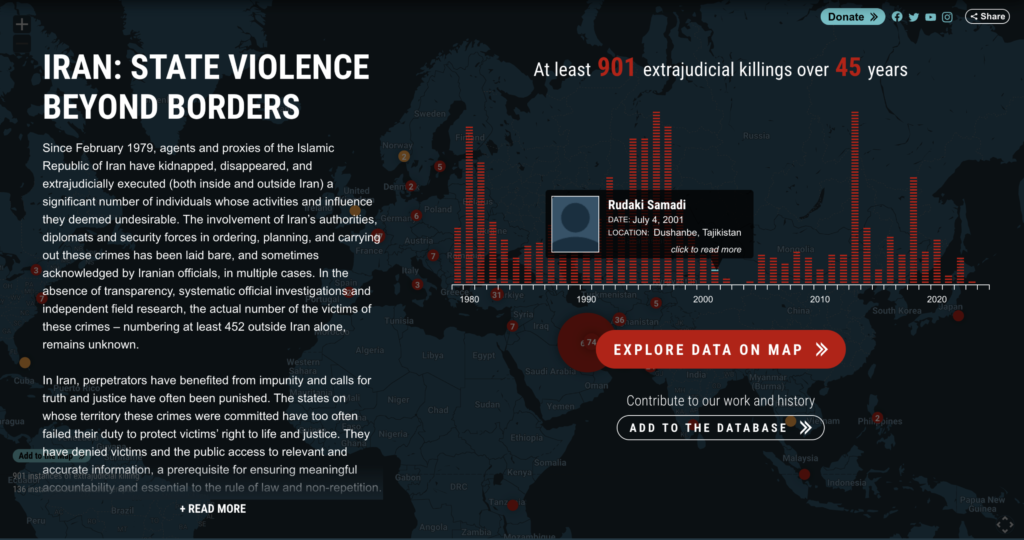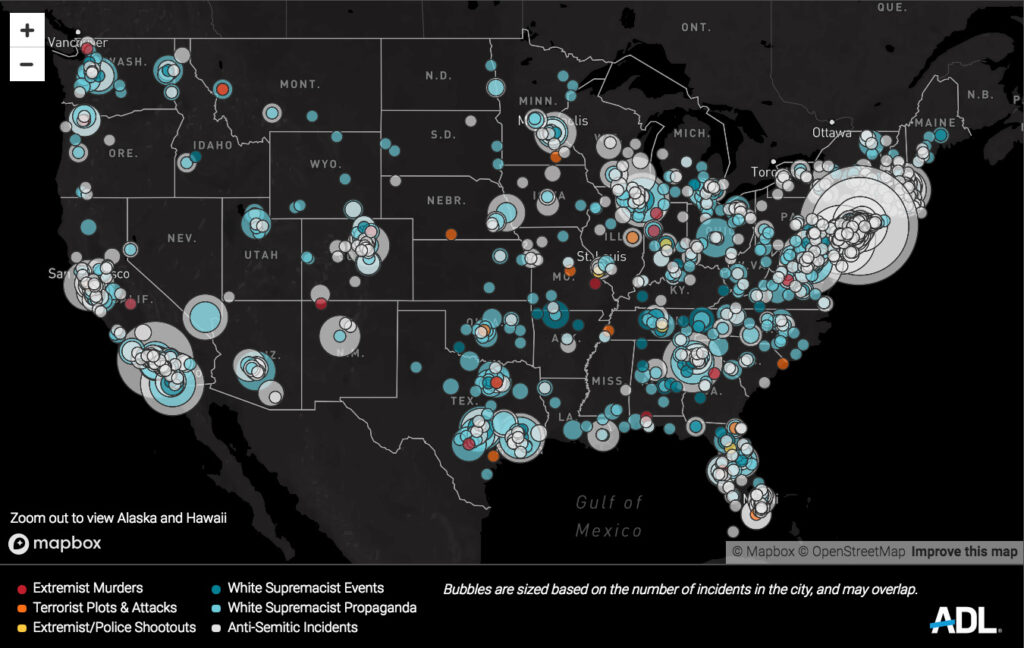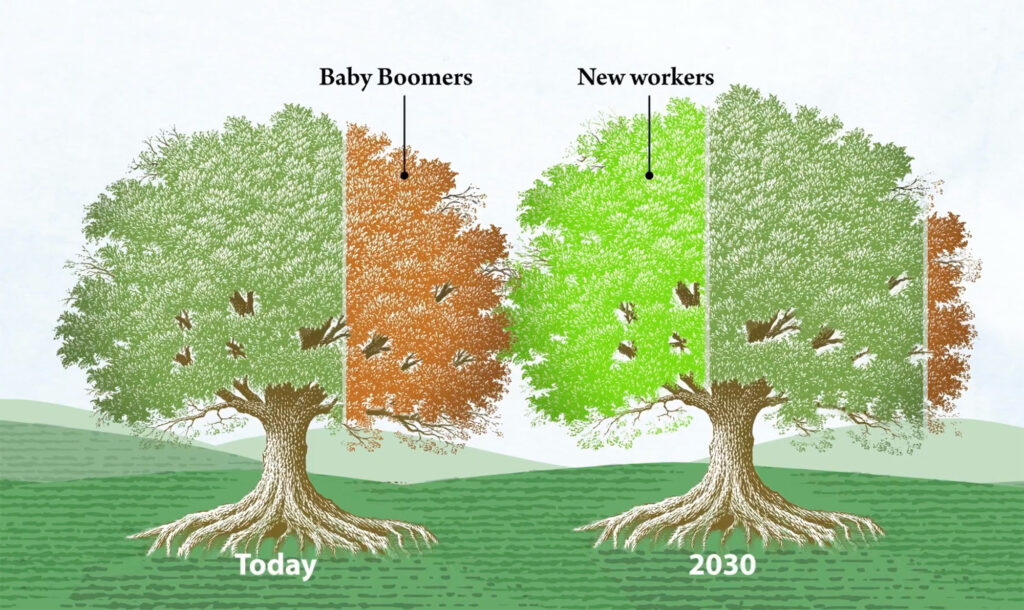Visualizing History Through Hong Kong Protest Data
Hong Kong Accountability Archive (HKAA) / 2025 / Education, Human Rights, Politics & Government, Racial Equity
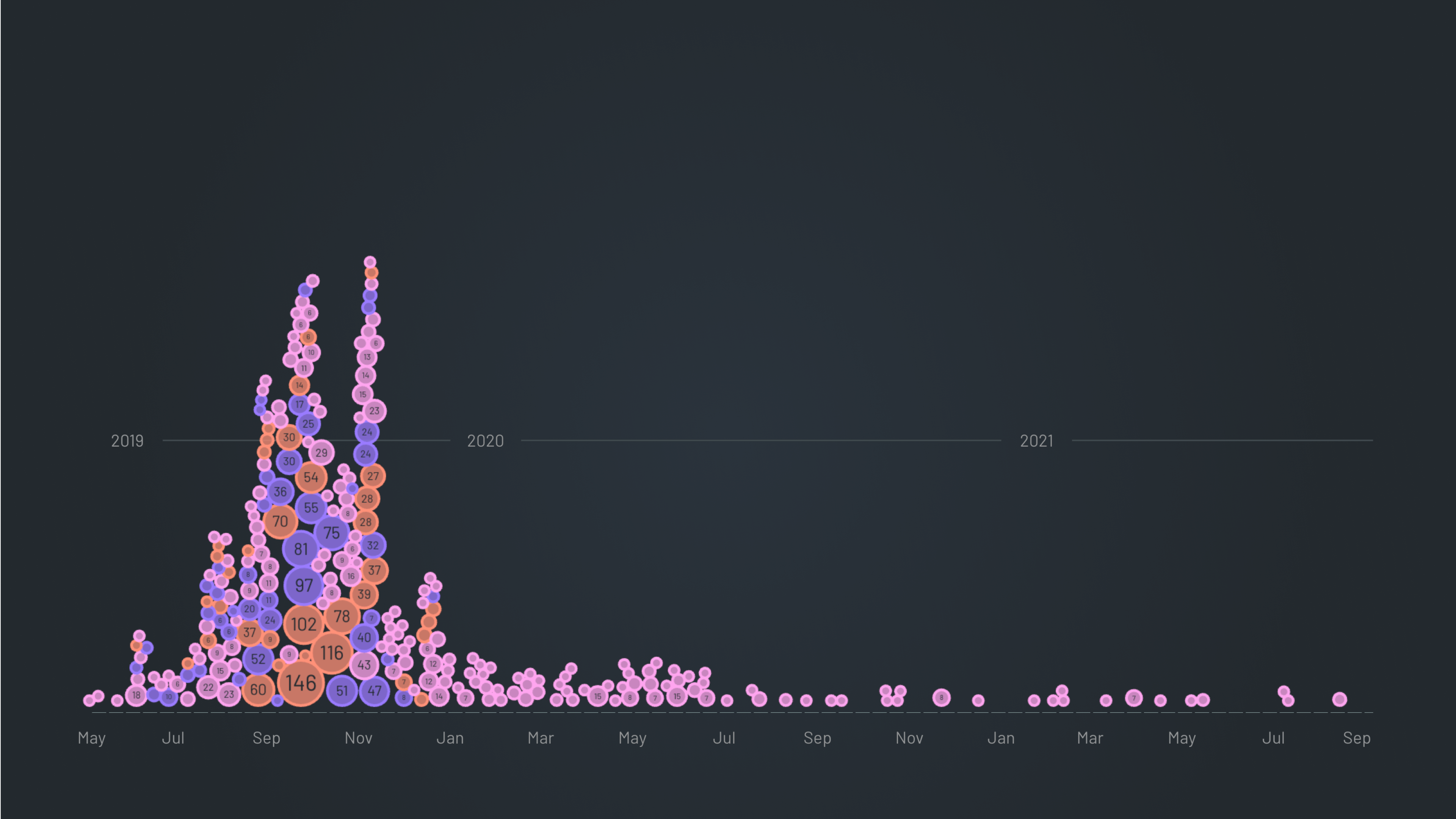
Overview
When Hong Kong citizens engaged in largely peaceful protests over a new extradition law, police responded with violence. Videos captured during those chaotic, hopeful months in 2019 and 2020 now serve as a vital record of brutality and human rights violations. As the local government works to rewrite history, Graphicacy helped those behind the Hong Kong Accountability Archive preserve the truth.
- Services
- CMS Integration
- Data Management Solutions
- Data Visualization
- Engineering
- Geospatial Mapping
- Interactive Web Applications
- UX/UI Design
